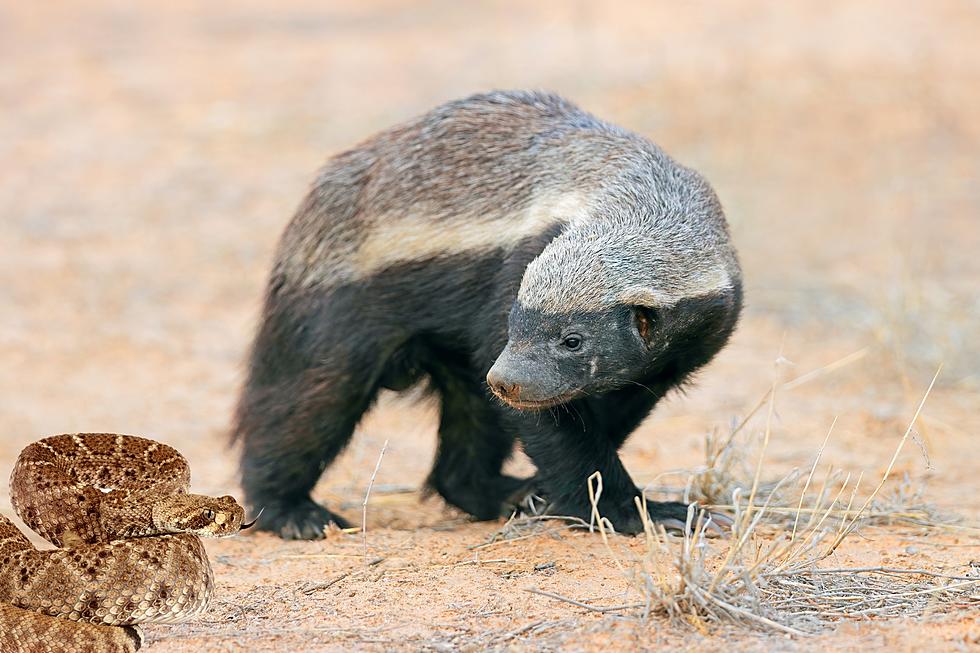
There Are 11 Natural Texas Predators That Thrive on Rattlesnakes
I think there's one thing that most Texans can agree on - we don't like rattlesnakes. With the weather beginning to get warmer and most of us doing spring cleaning, either around the garage or out by the shed, be prepared to meet up with a slithery creature.
Throughout Texas we have several rattlesnakes to be on the lookout for. One is the Western Diamondback also known by its scientific biological name genus Crotalus. The diamondback rattlesnake is brown with diamond-shaped markings in white and black and can grow to be up to four-and-a-half feet long.

Then there's the Massasauga Rattlesnake. Its coloration is light gray with brown and white with some oval blotches on its back. It is usually found in the central grasslands of Texas and around the swamps between East Texas and Louisiana.
There is also a smaller rattlesnake referred to as the Desert Massasauga. This snake is found primarily in West Texas in the Trans-Pecos area from the Western Panhandle to the Lower Rio Grande Valley. This little fella is dangerous and can sneak up on you.
All these rattlesnakes have 11 predators who hunt them. While Wildlife Informer magazine and other experts say there are only 10 predators, the fact remains that there are 11. Yet they still have not managed to put rattlesnakes on the endangered species or extinction list.
Here are 11 predators who prey on rattlesnakes in the Lone Star State:
- Coyotes - this has been a lifelong battle with rattlesnakes trying to avoid coyotes
- Eagles - while Texas has eagles we don't often see them within our cities
- King Snakes - they do exist in Texas and their favorite treat is a tasty little rattler
- Hawks - common all throughout the state, I have seen these birds flying and swooping down picking up mice and snakes
- Roadrunners - these speedy little guys I have recently found in my back pasture waiting patiently behind my storage buildings. I wondered why they were there. Now I know why.
- Owls - at the house where I've lived for several decades, we have always had owls hovering overhead. Must be the snakes.
- Mongoose - while the Small Indian Mongoose is not native to Texas, it is believed to have introduced to the region within the last century
- Badgers - these are usually found in the prairie and deserts of West Texas
- Black Racers snakes - These slithery creatures are cousins of the rattlesnakes and found in the eastern third of Texas. They prefer to be in the woodlands and rocky ridges of Texas.
- Possums - for the record these are my #2 favorites because they cannot contract rabies. Ask any possum you see and they will tell you they love to eat ticks, fleas, and all kinds of snakes.
- Humans - Also known as the Sweetwater Jaycees, famous worldwide for being the #1 predator of rattlesnakes in Texas. And yes, just like all the other predators the Jaycees do eat them.
Sources: Texas Parks and Wildlife, Reptile How, and Wildlife Informer
According to Texas Parks & Wildlife, ReptileHow.com, and WildlifeInformer.com, remember that while most rattlesnakes don't have deadly venom, their bites can cause excruciating pain and permanent muscle damage.
LOOK: This Is What Rattlesnakes Fear
LOOK: Here are the pets banned in each state
Gallery Credit: Elena Kadvany
LOOK: Stunning animal photos from around the world
Gallery Credit: Nicole Caldwell
LOOK: 30 fascinating facts about sleep in the animal kingdom
Gallery Credit: Katherine Gallagher
